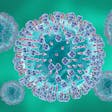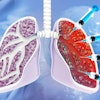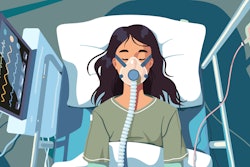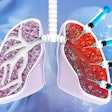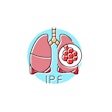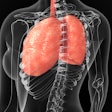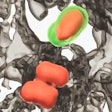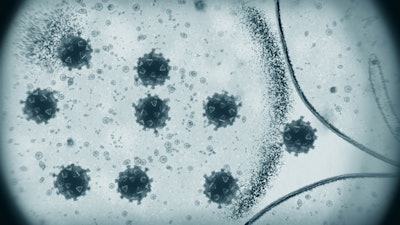
Researchers across the globe continue to examine data and uncover new information about COVID-19 and the lung damage it can cause. Recently, a team from the U.K. Coronavirus Immunology Consortium (UK-CIC) discovered distinct stages of alveolar damage as the virus moves from mild inflammation to severe scarring.
The scientists discovered the progression of lung fibrosis can be identified in surges of the immune system responding to the virus. Results of the study, “Integrated Histopathology, Spatial and Single Cell Transcriptomics Resolve Cellular Drivers of Early and Late Alveolar Damage in COVID-19,” were published in Nature Communications.
The type of lung damage that most frequently occurs in people with COVID-19 is diffuse alveolar damage (DAD). Although prior research acknowledged increasing immune responses in late-stage DAD, little information existed on cellular or molecular differences as it worsened.
This study combined multiple cell mapping technologies to create a comprehensive view of the cellular response to COVID-19 and evolving lung tissue changes. Analyzing post-mortem COVID-19 lung tissue samples, researchers applied single cell RNA sequencing and spatial transcriptomics techniques to locate gene activity and pinpoint molecular biomarkers and cellular interactions correlating to early- and late-stage DAD.
“The integrated method provides a detailed understanding of the molecular processes underlying COVID-19, which is a huge leap for understanding a virus that is still impacting millions of people,” said Martin Hemberg, PhD, in a news release. Dr. Hemberg leads his own lab in the Gene Lay Institute of Immunology and Inflammation at Harvard Medical School.
In early-stage DAD, researchers demonstrated:
- Protective inflammatory responses
- Increased expression of interleukin genes, which help regulate the immune system
- Upregulation of metallothionein-related genes, which help block high-metal toxins
They also noted varying levels of macrophages — a primary immune cell type in COVID-19 — as DAD progressed from mild to severe.
In late-stage DAD, researchers further demonstrated:
- Increased lung fibrosis markers
- Regulatory changes in several genes — particularly SERPINE1 — closely associated with fibrinolysis, a process in which the body breaks down blood clots
“One of the hallmarks of severe disease is clotting in blood vessels of the lung,” said Sam N. Barnett, PhD, of Imperial College London. “Here, we identified the factors and the specific cells driving this process, suggesting that there is an accumulation of blood clots due to a defect in mechanisms that break them down. This provides a potential target for resolving these blockages and restoring blood flow in the lung tissue.”
The hope for this study, which is part of the global Human Cell Atlas initiative, is its results will inform future research and lead to innovative therapies that prevent severe disease and improve patient outcomes.
“Our study allowed us to build a more thorough picture of how our lungs respond to the SARS-CoV-2 virus,” said lead author Jimmy Tsz Hang Lee, PhD, a senior data scientist at the Wellcome Sanger Institute. “We identified a group of new cell types that change between early and late stages of lung damage. We also identified sub-groups of immune cells, called macrophages, that start to accumulate in very early stages of infection and how they shift to different groups as the disease worsens.”

